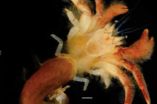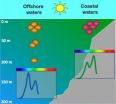(Press-News.org) Johns Hopkins researchers report concrete steps in the use of human stem cells to test how diseased cells respond to drugs. Their success highlights a pathway toward faster, cheaper drug development for some genetic illnesses, as well as the ability to pre-test a therapy's safety and effectiveness on cultured clones of a patient's own cells.
The project, described in an article published November 25 on the website of the journal Nature Biotechnology, began several years ago, when Gabsang Lee, D.V.M., Ph.D., an assistant professor at the Johns Hopkins University School of Medicine's Institute for Cell Engineering, was a postdoctoral fellow at Sloan-Kettering Institute in New York. To see if induced pluripotent stem cells (iPSCs) could be used to make specialized disease cells for quick and easy drug testing, Lee and his colleagues extracted cells from the skin of a person with a rare genetic disease called Riley-Day syndrome, chosen because it affects only one type of nerve cell that is difficult if not impossible to extract directly from a traditional biopsy. These traits made Riley-Day an ideal candidate for alternative ways of generating cells for study.
In a so-called "proof of concept" experiment, the researchers biochemically reprogrammed the skin cells from the patient to form iPSCs, which can grow into any cell type in the body. The team then induced the iPSCs to grow into nerve cells. "Because we could study the nerve cells directly, we could for the first time see exactly what was going wrong in this disease," says Lee. Some symptoms of Riley-Day syndrome are insensitivity to pain, episodes of vomiting, poor coordination and seizures; only about half of affected patients reach age 30.
In the recent research at Johns Hopkins and Memorial Sloan-Kettering, Lee and his co-workers used these same lab-grown Riley-Day nerve cells to screen about 7,000 drugs for their effects on the diseased cells. With the aid of a robot programmed to analyze the effects, the researchers quickly identified eight compounds for further testing, of which one — SKF-86466 — ultimately showed promise for stopping or reversing the disease process at the cellular level.
Lee says a clinical trial with SKF-86466 might not be feasible because of the small number of Riley-Day patients worldwide, but suggests that a closely related version of the compound, one that has already been approved by the U.S. Food and Drug Administration for another use, could be employed for the patients after a few tests.
The implications of the experiment reach beyond Riley-Day syndrome, however. "There are many rare, 'orphan' genetic diseases that will never be addressed through the costly current model of drug development," Lee explains. "We've shown that there may be another way forward to treat these illnesses."
Another application of the new stem cell process could be treatments tailored not only to an illness, but also to an individual patient, Lee says. That is, iPSCs could be made for a patient, then used to create a laboratory culture of, for example, pancreatic cells, in the case of a patient with type 1 diabetes. The efficacy and safety of various drugs could then be tested on the cultured cells, and doctors could use the results to help determine the best treatment. "This approach could move much of the trial-and-error process of beginning a new treatment from the patient to the petri dish, and help people to get better faster," says Lee.
INFORMATION:Other authors of the paper are Christina N. Ramirez, Ph.D., Nadja Zeltner, Ph.D., Becky Liu, Constantin Radu, M.S., Bhavneet Bhinder, Hakim Djaballah, Ph.D., and Lorenz Studer, Ph.D., of the Sloan-Kettering Institute; and Hyesoo Kim, Ph.D., Young Jun Kim, M.D., Ph.D., InYoung Choi, Ph.D., and Bipasha Mukherjee-Clavin of the Johns Hopkins University School of Medicine.
The work was supported by funds from New York State Stem Cell Science (NYSTEM), the New York Stem Cell Foundation (NYSCF), the state of Maryland (TEDCO, MSCRF), the Commonwealth Foundation for Cancer Research, the Experimental Therapeutics Center at Memorial Sloan-Kettering Cancer Center, the William Randolph Hearst Fund in Experimental Therapeutics, the L.S. Wells Foundation, and the National Cancer Institute (grant number 5 P30 CA008748-44).
On the Web:
Research summary for Gabsang Lee: http://www.hopkinsmedicine.org/institute_cell_engineering/experts/gabsang_lee.html
Q & A with Gabsang Lee and Hyesoo Kim: http://www.hopkinsmedicine.org/institute_cell_engineering/experts/meet_scientists/gabsang_lee.html
END
ITHACA, N.Y. – Are juicier, sweeter, more disease-resistant watermelons on the way? An international consortium of more than 60 scientists from the United States, China, and Europe has published the genome sequence of watermelon (Citrullus lanatus) — information that could dramatically accelerate watermelon breeding toward production of a more nutritious, tastier and more resistant fruit. The watermelon genome sequence was published in the Nov. 25 online version of the journal Nature Genetics.
The researchers discovered that a large portion of disease resistance genes ...
DURHAM, N.C. -- One tropical lizard's tolerance to cold is stiffer than scientists had suspected.
A new study shows that the Puerto Rican lizard Anolis cristatellus has adapted to the cooler winters of Miami. The results also suggest that this lizard may be able to tolerate temperature variations caused by climate change.
"We are not saying that climate change is not a problem for lizards. It is a major problem. However, these findings indicate that the thermal physiology of tropical lizards is more easily altered than previously proposed," said Duke biologist Manuel ...
HOUSTON - Researchers at The University of Texas MD Anderson Cancer Center have tracked down a cancer-promoting protein's pathway into the cell nucleus and discovered how, once there, it fires up a glucose metabolism pathway on which brain tumors thrive.
They also found a vital spot along the protein's journey that can be attacked with a type of drug not yet deployed against glioblastoma multiforme, the most common and lethal form of brain cancer. Published online by Nature Cell Biology, the paper further illuminates the importance of pyruvate kinase M2 (PKM2) in cancer ...
Areopaguristes tudgei. That's the name of a new species of hermit crab recently discovered on the barrier reef off the coast of Belize by Christopher Tudge, a biology professor at American University in Washington, D.C.
Tudge has been interested in biology his whole life, from boyhood trips to the beach collecting crustaceans in his native Australia, to his undergraduate and PhD work in zoology and biology at the University of Queensland. He has collected specimens all over the world, from Australia to Europe to North and South America.
Until now, he has never had ...
Athens, Ga. – More people are better off thanks to the impact of an influx of direct-to-consumer advertising spending than they would be without those marketing efforts, according to a study recently published by Jayani Jayawardhana, an assistant professor in the University of Georgia College of Public Health.
The multi-year study focused on advertising efforts surrounding cholesterol-reducing prescription medications. Jayawardhana found increased levels of consumer welfare due to direct-to-consumer advertising than when compared to situations without this type of marketing. ...
Call it "PAC-MAN, the Sequel." Scientists with NASA's Cassini mission have spotted a second feature shaped like the 1980s video game icon in the Saturn system, this time on the moon Tethys.
The pattern appears in thermal data obtained by Cassini's composite infrared spectrometer, with warmer areas making up the PAC-MAN shape.
"Finding a second PAC-MAN in the Saturn system tells us that the processes creating these 'PAC-MEN' are more widespread than previously thought," said Dr. Carly Howett, the lead author of a recently published paper in the journal Icarus. "The Saturn ...
An international team of biologists led by Indiana University's David M. Kehoe has identified both the enzyme and molecular mechanism critical for controlling a chameleon-like process that allows one of the world's most abundant ocean phytoplankton, once known as blue-green algae, to maximize light harvesting for photosynthesis.
Responsible for contributing about 20 percent of the total oxygen production on the planet, the cyanobacteria Synechococcus uses its own unique form of a sophisticated response called chromatic acclimation to fine tune the absorption properties ...
Implementation of the Affordable Care Act – now assured by the re-election of President Obama – is expected to result in up to 50 million currently uninsured Americans acquiring some type of health insurance coverage. But a study by researchers at the Mongan Institute for Health Policy at Massachusetts General Hospital (MGH) finds that a significant percentage of the primary care physicians most likely to care for newly insured patients may be not be accepting new patients. The investigators note that strategies designed to increase and support these "safety-net" physicians ...
Shedding light on the limits of life in extreme environments, scientists have discovered abundant and diverse metabolically active bacteria in the brine of an Antarctic lake sealed under more than 65 feet of ice.
The finding, described in this week's issue of the Proceedings of the National Academy of Sciences, is surprising because previous studies indicate that the brine has been isolated from the surface environment -- and external sources of energy -- for at least 2,800 years, according to two of the report's authors, Peter Doran and Fabien Kenig, both professors ...
You could call this "Pac-Man, the Sequel." Scientists with NASA's Cassini mission have spotted a second feature shaped like the 1980s video game icon in the Saturn system, this time on the moon Tethys. (The first was found on Mimas in 2010). The pattern appears in thermal data obtained by Cassini's composite infrared spectrometer, with warmer areas making up the Pac-Man shape.
"Finding a second Pac-Man in the Saturn system tells us that the processes creating these Pac-Men are more widespread than previously thought," said Carly Howett, the lead author of a paper recently ...



